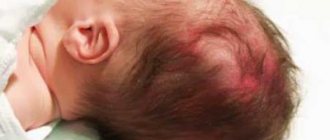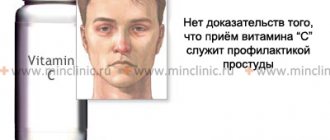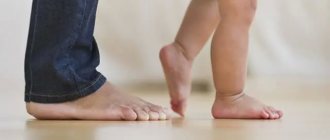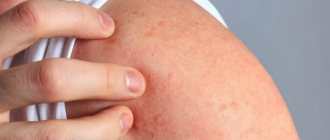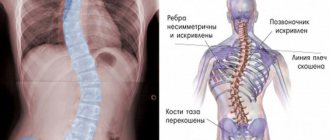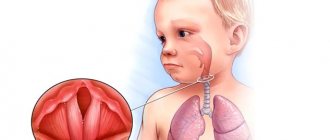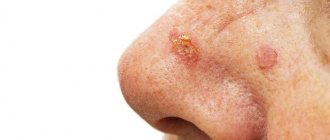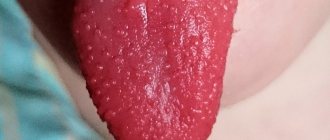Roseola infantum is a common viral infection that can cause fever and rash.
Pathogen:
herpes simplex virus type 6 (HSV-6). Less commonly, herpes simplex virus type 7 (HSV-7).
Who is sick:
Most cases occur between the ages of 6 months and older. up to 2 years. 95% of children are already infected with roseola by the time they enter kindergarten. After an infection, the pathogen remains in the body.
Incubation period:
1-2 weeks
Causes
The causative agent of the disease is a certain type of herpes virus, and signs of roseola in a child appear as a consequence of the body’s reaction to this virus. Symptoms and signs of roseola begin to appear only against the background of the presence of several factors.
In the practice of infectious disease doctors, there are cases when the cause of infection with the roseola virus in children occurs as a result of the baby’s contact with the carrier of the pathogen. In addition, roseola does not have a seasonal nature, but unfavorable weather conditions can increase the risk of developing the disease. Especially in the autumn-spring period, when there is a weakening of immunity in children, and the body is most susceptible to various types of infections. During this period, parents are advised to be especially attentive to the physical condition and well-being of their children.
In addition, the following factors can be identified among the causes of roseola in children:
- uncontrolled use of medications, resulting in a decrease in the body’s defenses;
- consequences of the child’s previous chemotherapy sessions;
- presence of cancer and HIV;
- impaired immunity as a result of congenital pathologies.
Description
Infantile roseola is an infectious disease that manifests itself as fever and rash.
The disease is also known under other names: pseudorubella, three-day fever, sudden exanthema. Most common in children under three years of age. This happens because after birth, children receive antibodies to the pathogen along with breast milk, but by six months their number decreases, and the child’s body becomes susceptible to infection. A stable immune system, capable of successfully fighting most infectious agents, is formed only by the age of three, therefore, in this period of a child’s life - from six months to three years - infectious diseases are especially acute. After experiencing roseola, strong immunity is developed for the rest of your life. The disease is caused by herpes virus types 6 and 7. The carriers of the disease are ordinary healthy people in whose bodies the virus is present, but does not manifest itself in any way. The infection is presumably transmitted by airborne droplets, entering the surrounding air when coughing, sneezing and talking. The height of the disease occurs after an incubation period that lasts from five to fifteen days. The disease is characterized by seasonality - it is most common in the spring and summer.
The disease does not occur in older children and adults. After recovery, there are no consequences that threaten the child’s health.
Pathogens
As mentioned above, the causative agent of roseola symptoms in children is herpes type 6. Since children under one year of age do not have immunity to this disease, they are the ones most susceptible to the development of roseola.
It is important to know that the incubation period can last about two weeks, but with a timely diagnostic examination and timely treatment, symptoms can be completely eliminated within 7 days.
There is evidence that one of the factors in infection entering a child’s body is the airborne route.
How long is the incubation period for roseola?
The causative agent of the disease is the sixth type of herpes virus, which, when it gets on the skin and tissues, causes their damage. By reacting with immune cells, the pathogen provokes the appearance of a characteristic rash. In adults, the virus causes chronic fatigue syndrome, and in children under three years of age - sudden exanthema. How long is the incubation period for roseola? – 3-7 days. Although there are cases when the incubation period reaches 15 days.
Most often, pseudorubella is diagnosed in the spring and autumn.
Symptoms
The development of roseola symptoms in children occurs in stages, and begins with an increase in body temperature. However, all attempts to reduce it using antipyretic drugs and medications do not give the desired result. After some time, the signs of roseola are complemented by inflammation of the respiratory organs and the appearance of a skin rash.
The period of fever in a child can be 3 days. It is interesting that temperatures reaching a critical level of up to 40 degrees can appear suddenly and disappear just as suddenly. The development of the disease worsens the child’s well-being, which is characterized by:
- decreased appetite;
- general weakness of the body;
- enlarged lymph nodes in the occipital region and back of the neck;
- increased pulsation of the fontanel;
- pale skin on the hands;
- the appearance of febrile seizures;
- trembling chin;
- tendency to loose stools;
- the appearance of rhinitis and redness of the throat;
- the appearance of spots on the soft palate or tongue;
- cold feet and hands, despite elevated body temperature;
- the appearance of a skin rash in the form of pink spots with a white border.
If the above symptoms appear, you should immediately call a doctor to avoid possible complications.
Pathogenesis
The HHV-6 virus enters the body and exhibits tropism for T cells. The virus has a tetrameric complex, thanks to which it attaches to the host cell. After this, it releases DNA into the nucleoplasm of the cell and the process of replication (multiplication) of the virus begins. It multiplies in T-lymphocytes, megakaryocytes, monocyte-macrophage cells of various tissues and thymus cells.
Isolation of HHV-6 from saliva and sputum indicates that the virus is located in the salivary glands. A full replication cycle lasts about 3 days. Replication affects the morphology of the host cell - they eventually die.
Primary infection is characterized by viremia (the presence of virus in the blood), which stimulates the production of antibodies. Specific IgM antibodies are produced in the first five days from the onset of the disease, and in the next 1-2 months, IgM decreases and is subsequently undetectable. IgM antibodies can be detected when the infection is reactivated.
Specific IgG increases in the second or third week of the disease and persists for the rest of a person’s life, but in quantities lower than in childhood. In acute infection, HHV-6 reproduction in blood cells is a risk factor for transmission of the virus during organ transplantation and blood transfusion.
After the initial infection, the virus persists in a latent state or as a chronic infection with periodic reactivation of the virus. Herpes viruses have a pronounced immunosuppressive effect - they suppress immune responses.
Classification
Roseola in children can occur in the absence or presence of certain symptoms, so the disease is divided into two types.
The danger of an asymptomatic infectious disease is that it is not possible to start treatment in a timely manner, and in addition, the child during this period is a carrier of roseola and can infect other children through contact with them in kindergarten or school.
In the second case, the intensity of roseola symptoms is influenced by a number of important points:
- individual characteristics of the baby’s body;
- associated factors;
- level of the body's defenses (immunity).
When roseola occurs in a simple form, the child’s temperature rises and characteristic rashes appear on the skin. It is noteworthy that after treatment there is no fear of relapse.
As for the flaky form, it is distinguished by a profuse rash in the form of pink spots and blisters that cover the child’s skin, but is not accompanied by itching and does not cause discomfort to the baby.
Medicines
Photo: unsplash.com
The main medications for fever are non-steroidal anti-inflammatory drugs. For very young children under 1 year of age, NSAIDs are used in the form of injections and rectal suppositories. Older children can be given medicine in tablet form. To reduce the temperature, Paracetamol, Ibuprofen, Nimesulide, Ketorolac are used, with the obligatory calculation of the dose according to the age and weight of the child. Under no circumstances should children be given Aspirin, due to the risk of developing Reye's syndrome!
Infusion therapy is necessary in cases where the child cannot independently take the volume of fluid he needs and if it is not possible to reduce the temperature by conventional means. Isotonic solutions of Sodium Chloride, Glucose, and Ringer's solution are used as droppers. The volume of fluid infused is calculated based on the severity of the child’s condition, his age and weight. If necessary, a catheter is placed in a peripheral vein, so there is no need to re-inject before each infusion.
If the temperature is not brought down by non-steroidal drugs and infusion therapy, glucocorticosteroids can be used in a hospital setting: Prednisolone, Methylprednisolone. For children, it is used in the form of intravenous injections; for longer effects, the drug is added to the dropper.
When a convulsive syndrome develops against a background of high temperature, anticonvulsants (Diazepam) are used to prevent spasm of the respiratory muscles.
If catarrhal phenomena occur, symptomatic treatment is used. If a child has a cough, you can use syrup with ivy (Gelisal, Gerbion). For a runny nose, you can use an isotonic solution and medications with sea water to rinse the nasal passages.
To combat diarrhea in young children, adsorbent drugs (Smecta) and antimicrobial agents (Nifuroxazide) are used. It is worth remembering that diarrhea is an additional factor in the loss of fluid and microelements, which complicates the course of the disease.
The rash associated with roseola infantile, as mentioned, does not require special treatment, so no drugs are prescribed to get rid of it.
When to see a doctor
Considering that roseola can manifest itself as a sharp rise in temperature even before the rash appears, it is necessary to “play ahead” and consult a pediatric infectious disease specialist. Also, treatment of roseola in children should be started immediately when a rash appears on the skin. You cannot take any independent measures. Go to the clinic’s website and make an appointment with a doctor at a convenient time, get advice on the diagnosis and treatment of the disease. Remember that amateur activities can be dangerous and have disastrous consequences!
Prevention
Any disease is easier to prevent than to treat. Considering the causes of roseola in children, which were mentioned above, prevention of the disease lies in strengthening the child’s body’s immunity from the first days of his birth. If adults develop protective forces against the viruses that cause three-day fever, then a young child is easy prey for a dangerous infectious disease.
It is important to know that in isolated cases, roseola can lead to severe complications, which can be avoided with timely treatment of roseola in children and following the recommendations of the attending physician.
When a child reaches the age of 4 years, the risk of getting roseola practically disappears. As practice shows, long-term breastfeeding of a baby is a good way to prevent this infectious disease.
The set of preventive measures includes the implementation of the following recommendations:
- the child should walk in the fresh air every day for at least 2 hours;
- it is important to provide him with adequate nutrition;
- to eliminate the risk of an infectious disease, it is necessary to maintain personal hygiene, timely clean the premises, care for the child, etc.;
- to strengthen the immune system, it is necessary to provide the child with proper nutrition, accustom him to gentle hardening procedures, and saturate the body with vitamins;
- it is necessary to promptly treat all diseases, especially infectious ones;
- The child should have adequate sleep and physical activity during the day.
Considering that in the autumn-winter period there is a decrease in immunity, parents need to pay due attention to strengthening the immune system during this period.
The lack of seasonal vegetables can be compensated for by consuming special balanced mineral and vitamin complexes for children.
Diagnostics
With similar symptoms of roseola and rubella, roseola has characteristic differences: the persistence of a febrile state for 3 days and the appearance of a rash on the 4th day.
In addition, the spots that appear on the skin are not accompanied by itching or discomfort, and after they disappear, there are no scars or scars on the skin. The rashes on the baby’s body are first localized in one place, and then gradually spread over the neck and face.
Treatment of roseola in children begins after confirmation of the presence of the disease through diagnostics, including tests. In the modern laboratory of JSC “Medicine” (clinic of Academician Roitberg) in the Central Administrative District, a number of tests are carried out, which are taken by a sick child:
- general blood and urine analysis;
- PCR analysis;
- stool analysis for dysbacteriosis;
- serological studies.
The results obtained during the research allow the pediatric infectious disease specialist to draw appropriate conclusions, make a diagnosis and determine how to treat roseola in a child, taking into account the characteristics of the course of the disease and the health status of a particular small patient.
An individual approach, highly qualified doctor and the wide capabilities of our medical institution allow us to quickly and effectively deal with the elimination of symptoms of the disease.
At JSC “Medicine” (clinic of academician Roitberg), all studies are carried out using modern equipment. Test results are provided as quickly as possible, which greatly facilitates making a diagnosis and prescribing the correct treatment. You can find out on the website the entire list of services, as well as their costs.
Treatment
Treatment of roseola in children is carried out on the basis of an integrated approach, the main stage of which is drug therapy. Some proven folk remedies can be prescribed as a useful and effective addition to the main course.
An important role in the recovery process is played by adherence to a certain regimen, which allows you to quickly cope with the disease.
Important! If the temperature rises to critical levels and unsuccessful attempts to normalize it, there is no need to delay time and immediately call an ambulance by phone +7 (495) 229-00-03 (24 hours a day).
Features of roseola treatment
If your child has been diagnosed with roseola, make sure that the patient is in a well-ventilated area and drinks small amounts of water every 20 minutes. This will avoid dehydration.
If a child refuses to eat during a fever, there is no need to force him to eat. When the temperature subsides, the baby's menu should consist of easily digestible foods and dishes rich in vegetables and fruits.
Drug treatment for roseola involves taking medications that should only be prescribed by a doctor based on test results. Any amateur activity in the treatment of an infectious disease is excluded!
At the same time as taking medications, it is necessary to treat the skin using special ointments and creams that will help quickly remove rashes on the baby’s body.
After the main course of treatment, the child is prescribed rehabilitation therapy, including taking vitamins and immunostimulating agents to improve the protective functions of the child’s body, walks in the fresh air, and active games.
When choosing medications to treat roseola in a child, the doctor pays special attention to medications to eliminate fever or seizures in the baby.
For this purpose, antipyretic drugs are used that are appropriate for the age of the young patient. It is known that not all antibiotics can be used to treat roseola, so the selection of medications and their prescription should be handled exclusively by a doctor.
As for folk remedies, caution must be exercised. For example, you should refrain from using them to reduce temperature.
It is important to know that with the help of natural ingredients you can improve the general condition of the child, but they will not affect the causative agent of the disease in any way. Folk remedies are effective at the last stage of treatment of roseola in children. Of the most common and effective traditional medicine recipes, the following are recommended.
- Dried fruits compote. To prepare it, you need to pour boiling water over any types of dried fruits or a mixture of them and after leaving for 1 hour, you can give it to your baby in small portions to maintain water balance and quench thirst.
- Herbal decoctions of chamomile, calendula, St. John's wort, and rose hips increase the body's resistance to infections. You can prepare decoctions using a simple standard method.
- Medicinal tea with raspberry leaves, lemon, linden, and a small amount of currant juice for a speedy recovery after illness.
If you follow all the doctor’s prescriptions and recommendations, the symptoms of the disease will quickly subside, and your baby will be healthy, cheerful and joyful again!
Procedures and operations
In case of high fever, the child must be rubbed down; in other degrees of fever, there is no need for rubdown. Rubbing is carried out if the temperature is above 40, and the use of antipyretic drugs is ineffective.
It should be noted that with this infection this condition is extremely rare, since the temperature can be easily reduced by taking medications. To wipe the child, use water at a temperature of 30-32 (in no case with vinegar or vodka solution). Rubbing is carried out every 20-30 minutes, involving the child’s limbs and torso.
After the procedure, it is either left open or covered with a light sheet. When moisture evaporates, the temperature decreases by 1.5 C. If the child is shaking (freezing), then the water temperature is increased or the child is covered with a blanket.
